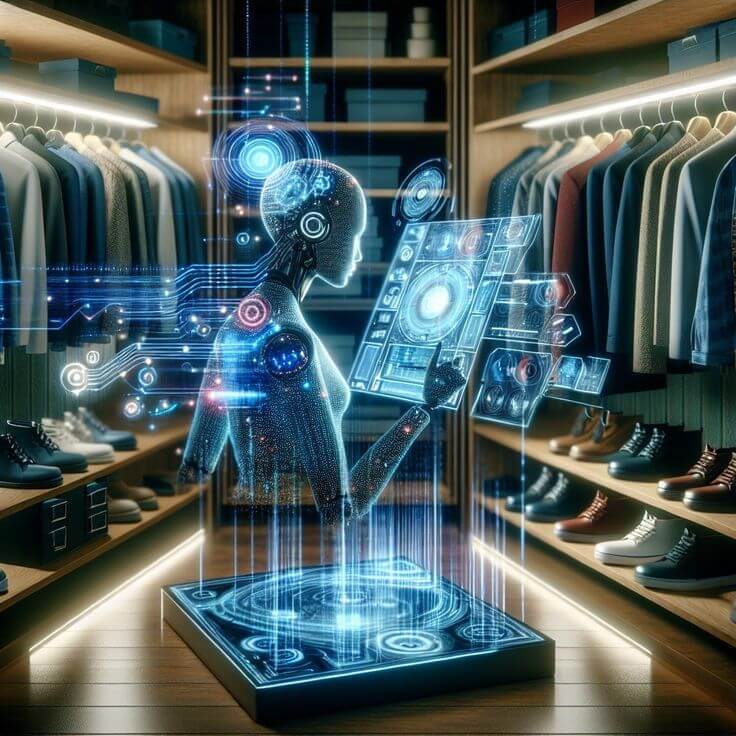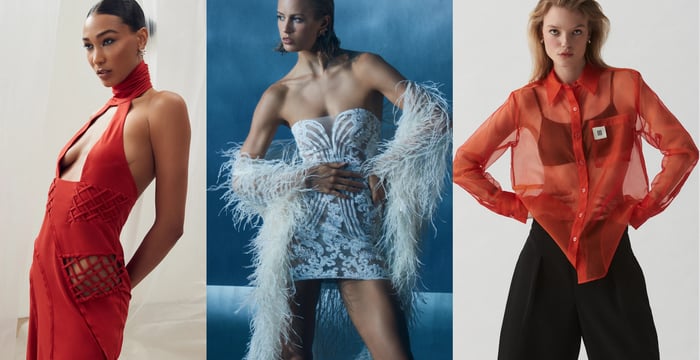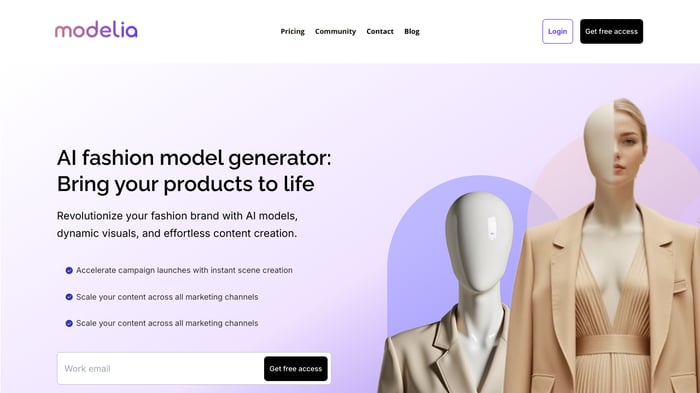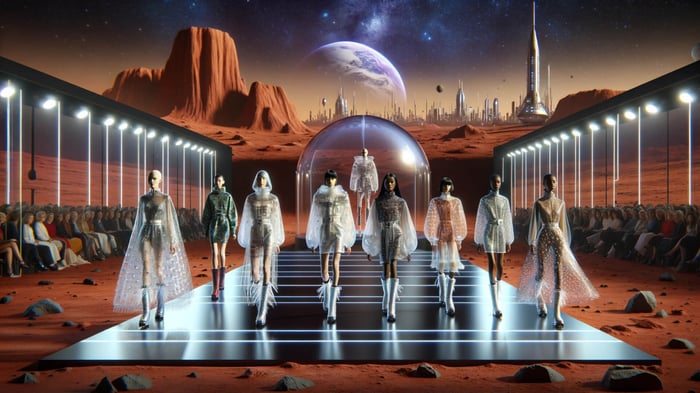AI-Generated Fashion: Revolutionizing the Fashion Industry with Artificial Intelligence
Table of Contents
Artificial Intelligence has expanded well beyond its original domains of science and engineering. Today, it's reshaping areas that traditionally relied on human intuition and creativity. The realm of clothing design and innovation is one of those surprising frontiers. With advanced tools now assisting in everything from concept sketches to entire fashion shows, the industry is evolving faster than ever. The concept of AI-generated fashion is no longer futuristic, it is happening today and reshaping creativity itself.

The influence of artificial intelligence is being felt everywhere, from healthcare and education to visual arts and apparel design. What makes the fashion industry unique is how AI interacts not just with data but with culture, imagination, and personal expression.
What is AI-Generated Fashion?
Think of AI fashion as your behind the scenes creative partner one that never sleeps, constantly learns, and always has fresh ideas. This approach refers to clothing, accessories, and entire collections dreamed up with the help of intelligent algorithms. These systems dive into massive datasets, from historical style archives and global purchasing habits to color trends and emerging cultural shifts.
Here’s where it gets exciting: AI doesn’t just replicate existing trends; it analyzes, connects, and sometimes surprises. It might notice that bold blues are making waves in South America while minimalist cuts are gaining traction in Europe and suggest a hybrid collection that speaks to both. It’s this ability to process vast amounts of information and filter it through a creative lens that’s changing the way designers work.
Even more impressive? AI-generated fashion is incredibly agile. When a celebrity debuts a new style on social media or a global event shifts consumer mood overnight, AI tools can adjust on the fly, generating design recommendations that feel timely and relevant. It’s not replacing human creativity; it’s supercharging it. And in a world where speed, personalization, and staying ahead of the curve are essential, that’s a game-changer for designers, brands, and fashion lovers alike.

The Early Adoption of AI in Fashion
Brands that took the first leap
Early experimentation came from pioneering brands like Adidas, which used predictive models to understand consumer demand and personalize sneaker designs. Tommy Hilfiger also incorporated intelligent forecasting into collection planning and design execution.

IBM Watson’s foray into fashion
I still remember when IBM Watson made its move into the fashion world back in 2016. The tech giant teamed up with Australian designer Jason Grech to explore how artificial intelligence could play a role in the creative process. By analyzing thousands of fashion images and trends, Watson was able to generate insights and even suggest design elements that aligned with Jason’s aesthetic. It was one of the first real examples of how data and creativity could coexist, proving that intelligent systems could actually enhance (not replace) human artistry in high fashion.
Google’s Project Muze
Another interesting example was when Google collaborated with Zalando on something called Project Muze. The idea was simple but groundbreaking: users would input their personality traits and style preferences, and the system would generate outfit suggestions that matched their unique profile. It felt like a glimpse into the future of ultra-personalized fashion, where technology could help people discover styles that truly reflected who they are. It was one of the early signs that fashion was heading toward a more individualized, tech-driven direction.

Inspiration for Modelia
Building on these milestones, Modelia has embraced intelligent design systems as an integral part of its process. The company blends creative intuition with predictive insights, crafting collections that feel both ahead of trends and genuinely unique. In the world of AI-generated fashion, this is one of the most interesting emerging tools to look up. Check Modelia and try it out for free!
Check Modelia and try it out for free!
How AI predicts fashion trends seasonally
Predicting fashion trends isn’t guesswork anymore it’s science, powered by data. Advanced AI models keep an eye on subtle shifts in consumer sentiment, online browsing patterns, and worldwide style influences. These insights help brands like Modelia stay a step ahead, fine-tuning upcoming collections before trends fully blossom.
But here’s the magic: this predictive power goes hand in hand with sustainability. By accurately forecasting demand, AI helps brands optimize material usage, minimize production waste, and avoid overproduction something the industry has struggled with for decades. For Modelia, this isn’t just smart business; it’s part of a deeper commitment to aligning cutting-edge fashion with environmental responsibility. The result? Collections that feel personal, timely, and conscious showing that innovation and care for the planet can absolutely walk hand in hand.

The evolution of virtual fashion models
Virtual fashion models are no longer a futuristic concept but a vital part of today’s marketing strategy. These digital influencers, like Lil Miquela and Shudu Gram, command massive audiences on social media platforms, influencing consumer choices without ever physically existing. AI technologies create these hyper-realistic figures with carefully crafted personalities and visual styles. For brands, including Modelia, the advantage is clear: they can promote products, adapt to new campaigns instantly, and remain free of logistical constraints. Virtual models also allow brands to test new looks digitally, reducing costs and enabling rapid experimentation.
- AI in fabric innovation: Intelligent algorithms aren’t just designing garments; they’re contributing to the development of advanced materials. From adaptable fabrics to sustainable blends, AI’s role in fabric research helps designers push boundaries in both aesthetics and environmental responsibility.
- Consumer personalization at scale: Consumers increasingly expect tailored recommendations that reflect their style and mood. Intelligent systems analyze purchase history, digital behavior, and even emotional triggers to offer suggestions that feel personal. Modelia uses these insights to design collections and enhance customer experiences.
The future of fashion shows with AI involvement
Traditional runway shows are evolving with the integration of AI and virtual reality. Virtual showcases offer interactive experiences where attendees can view collections in 3D, personalize garment colors and textures on-demand, and even purchase items directly from the virtual runway. These events also have a lower environmental impact, aligning with the industry's growing focus on sustainability. As technology advances, AI will not only help plan these shows but also analyze attendee feedback in real-time, offering brands unprecedented agility in responding to consumer desires and being able to use it at the moment AI-Generated Fashion.

Let’s talk challenges, ethics, and what’s next
As machine learning becomes more embedded in creative processes, it brings exciting opportunities but also big questions around ownership, transparency, and creative integrity. Responsible brands like Modelia don’t just embrace AI; they do so thoughtfully, making sure technology enhances human creativity rather than overshadowing it. Artificial intelligence is redefining fashion design, material innovation, and customer engagement. For forward thinking designers and brands, this evolution presents endless possibilities and important responsibilities. At Modelia, AI-generated fashion represents a chance to push boundaries, stay environmentally conscious, and keep the customer at the heart of every decision. Collaborating with Modelia means staying innovative, authentic, and ready to thrive in a fashion world that’s evolving faster than ever.
How would you rate this article:
Related Articles
- What Are Digital Outfits? How AI Is Powering Virtual Style
- How to Draw a Dress: Easy Fashion Sketch Tutorial
- Product Photography for Ecommerce: Tips for High-Converting Images
- Ugly Christmas Sweaters: Funny, Festive & Unique Styles
- How to Style Cool Baggy Outfits with Confidence
- How Digital Clothing Is Shaping the Future of Fashion
- India’s Best Fashion Designers to Know in 2025
- Top AI Fashion Companies Innovating the Future of Fashion with Artificial Intelligence
- AR Magic Mirror: How Augmented Reality is Transforming Fashion Retail and Shopping Experiences
- What is Apparel Branding?


